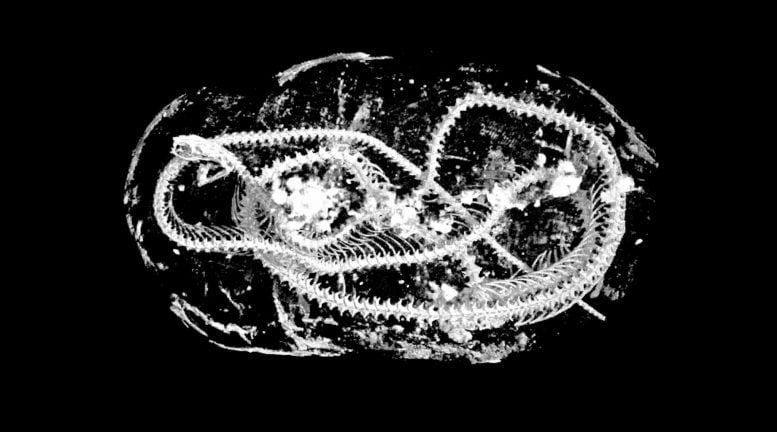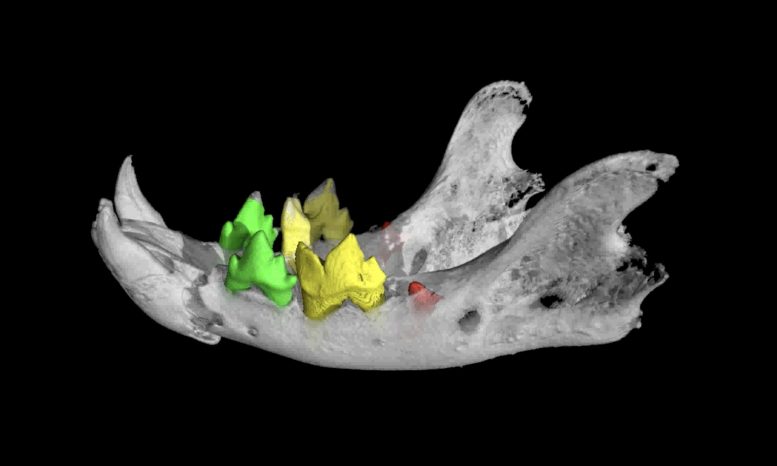
Swansea University
Analysis of three mummified animals — a cat, a bird, and a snake — from Ancient Egypt using advanced 3D X-ray imaging is described in a paper published in Scientific Reports. The technique provides insights into the conditions in which the animals were kept, their complex mummification process, and their possible causes of death, without causing damage to the specimens.
Richard Johnston and colleagues used non-invasive X-ray microCT imaging to reveal the skull of the cat to be around half the size of the external mummified wrappings. Its morphology suggests that the remains likely belong to an Egyptian domestic cat. Analysis of images of the teeth and skeleton indicate that the cat was less than five months old and may have purposefully had its neck broken at the time of death or during the mummification process to keep the head in an upright position.
Three mummified animals from ancient Egypt have been digitally unwrapped and dissected by researchers using high-resolution 3D scans that give unprecedented detail about the animals’ lives — and deaths — over 2000 years ago. The three animals — a snake, a bird and a cat — are from the collection held by the Egypt Centre at Swansea University. Previous investigations had identified which animals they were, but very little else was known about what lay inside the mummies. Now, thanks to X-ray micro CT scanning, which generates 3D images with a resolution 100 times greater than a medical CT scan, the animals’ remains can be analyzed in extraordinary detail, right down to their smallest bones and teeth. Credit: Swansea University
Measurements taken using 3D scans of the mummified bird of prey suggest that the remains most closely resemble the Eurasian kestrel and that the animal did not appear to have died from injuries to the neck. Imaging of the tightly coiled snake suggests that the remains belong to a juvenile cobra, which may have been killed by spinal fracture, consistent with tail capture and whipping methods commonly used to kill snakes. The high-resolution imaging enabled the authors to identify structures found within the mouth of the mummified snake as hardened resin. The precise placement at the opening of the glottis possibly provides evidence for complex ritualistic behavior, similar to the Opening of the Mouth procedure.

An improved understanding of animal mummification through scientific imaging may inform future conservation work and shed light on past human-animal relationships.
Read Egyptian Animal Mummies From Over 2000 Years Ago Digitally Unwrapped With High-Resolution 3D X-rays for more on this research.
Reference: “Evidence of diet, deification, and death within ancient Egyptian mummified animals” by Richard Johnston, Richard Thomas, Rhys Jones, Carolyn Graves-Brown, Wendy Goodridge and Laura North, 20 August 2020, Scientific Reports.
DOI: 10.1038/s41598-020-69726-0
Never miss a breakthrough: Join the SciTechDaily newsletter.
1 Comment
lol